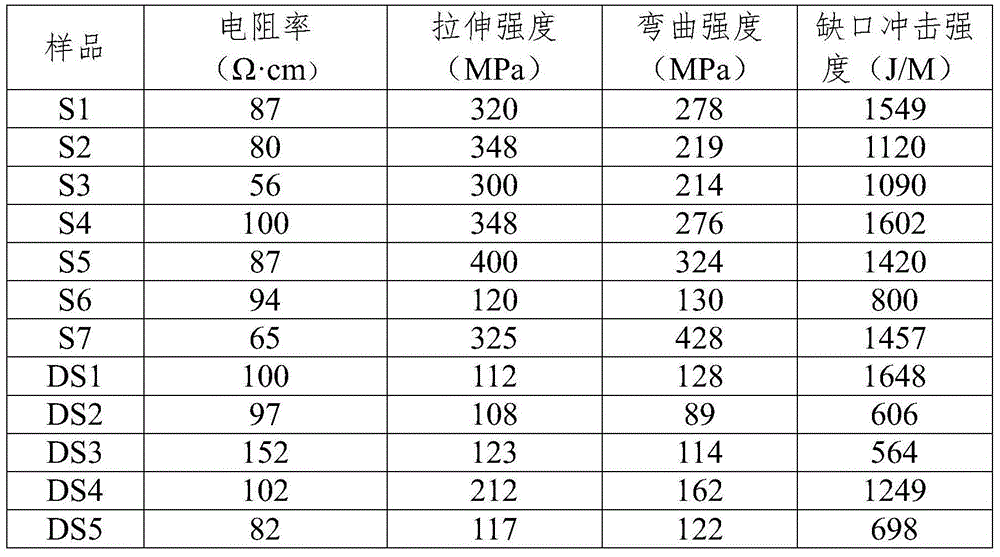Conducting photosensitive resin for 3D printing and preparation method thereof
A photosensitive resin and photosensitive technology, applied in the field of conductive photosensitive resin for 3D printing and its preparation, can solve the problems of poor mechanical properties and non-conductivity of photosensitive resin
- Summary
- Abstract
- Description
- Claims
- Application Information
AI Technical Summary
Problems solved by technology
Method used
Image
Examples
Embodiment 1
[0025] This example is used to illustrate the conductive photosensitive resin disclosed in the present invention and its preparation method.
[0026] Mix and stir 35 parts by weight of epoxy acrylate oligomer, 25 parts by weight of phenoxyethyl acrylate, and 15 parts by weight of trimethylolpropane triacrylate, then add 1 part by weight of benzoin dimethyl ether, 2 parts by weight Polyester-modified polydimethylsiloxane (BYK-307) and 17 parts by weight of carbon black (average particle size: 20nm) were heated and stirred in a water bath at 40°C to make them uniform.
[0027] Then vacuumize to remove air bubbles to obtain conductive photosensitive resin A1 with a viscosity of 300 mPa·s.
Embodiment 2
[0029] This example is used to illustrate the conductive photosensitive resin disclosed in the present invention and its preparation method.
[0030] Mix and stir 35 parts by weight of urethane acrylate oligomer, 30 parts by weight of phenoxyethyl acrylate, and 12 parts by weight of trimethylolpropane triacrylate, then add 1 part by weight of α-aminoketone photoinitiator, 2 parts by weight Parts of polyether-modified polydimethylsiloxane (BYK-310) and 20 parts by weight of silver powder (average particle size: 120nm), heated and stirred in a water bath at 50°C until uniform.
[0031]Then vacuumize to remove air bubbles to obtain conductive photosensitive resin A2 with a viscosity of 100 mPa·s.
Embodiment 3
[0033] This example is used to illustrate the conductive photosensitive resin disclosed in the present invention and its preparation method.
[0034] 30 parts by weight of epoxy acrylate oligomer, 15 parts by weight of phenoxyethyl acrylate, and 10 parts by weight of trimethylolpropane triacrylate are mixed and stirred, and then 1 part by weight of benzophenone photoinitiator, 4 parts by weight of polyether-modified polydimethylsiloxane (BYK-310) and 40 parts by weight of carbon black (with an average particle size of 20nm) were heated and stirred in a water bath at 30°C to make them uniform.
[0035] Then vacuumize to remove air bubbles to obtain conductive photosensitive resin A3 with a viscosity of 400 mPa·s.
PUM
 Login to View More
Login to View More Abstract
Description
Claims
Application Information
 Login to View More
Login to View More - R&D
- Intellectual Property
- Life Sciences
- Materials
- Tech Scout
- Unparalleled Data Quality
- Higher Quality Content
- 60% Fewer Hallucinations
Browse by: Latest US Patents, China's latest patents, Technical Efficacy Thesaurus, Application Domain, Technology Topic, Popular Technical Reports.
© 2025 PatSnap. All rights reserved.Legal|Privacy policy|Modern Slavery Act Transparency Statement|Sitemap|About US| Contact US: help@patsnap.com

